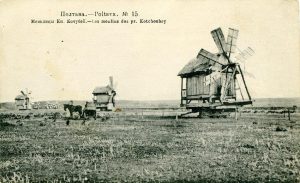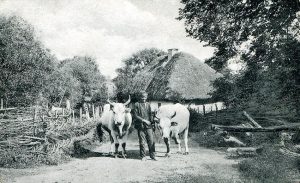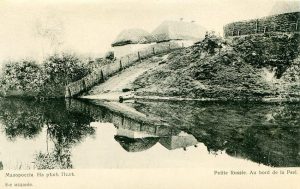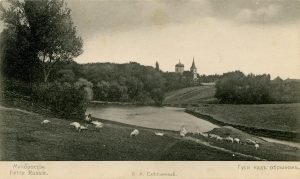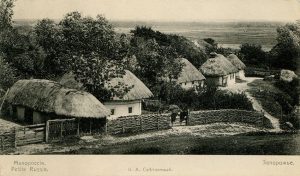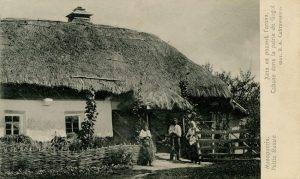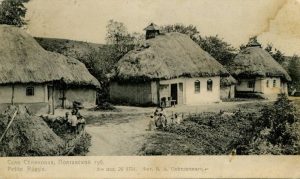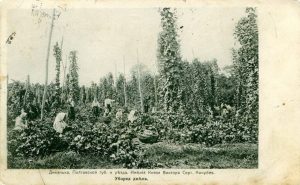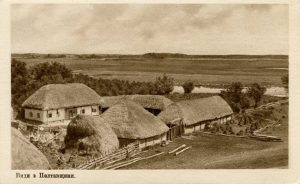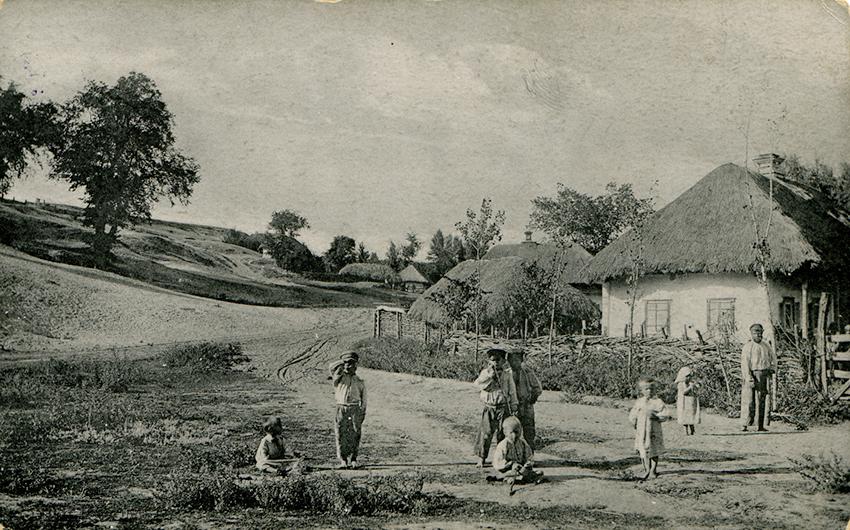
“These are rare historical postcards. I want people to see and use this material, so please share my album. I’ve been collecting Ukrainian postcards since 1992. My favorite topics include Ukrainian landscapes, typical Ukrainian villages and farm dwellings, as well as all aspects of rural life! Yes, these old village homes have inspired me for close to 25 years. Moreover, I clearly understand that these postcards represent a valuable part of our history and heritage! I’d like everyone to have access to them, because I’m not interested in collecting things for myself, but for the Ukrainian people.”

Many of the postcards are labeled “Little Russia” (Малороссия) whereas they obviously refer to the political and geographic territory of present-day Ukraine. Here is a brief explanation:
Little Russia (Russian: “Малороссия” – Malorossiya”), la Petite Russie (French term on the postcards) is an archaic geographical and historical term that continues to be used in Russian nationalist discourse, in which modern Ukrainians are presented as a single people in a united Russian nation.
“Little Russia” developed into a political and geographical concept in Russia, referring to most of the territory of modern-day Ukraine before the 20th century. Accordingly, derivatives such as “Little Russians” (Russian: Малороссы - Malorossy) were commonly applied to the people, language, and culture of Ukraine. Prior to the 1917 Bolshevik Revolution, a large part of Ukraine’s élite population adopted a “Little Russian identity” that competed with the local Ukrainian identity.
After the collapse of the Russian Empire in 1917, the term started to recede from common use. It is regarded as derogatory, referring to those Ukrainians with little or no Ukrainian national consciousness. The term retains currency among Russian nationalists who deny that Ukraine and Ukrainians are distinct from Russia and Russians. By the late 1980s, the term had become archaic, and Ukrainians regard its anachronistic usage as extremely offensive.

